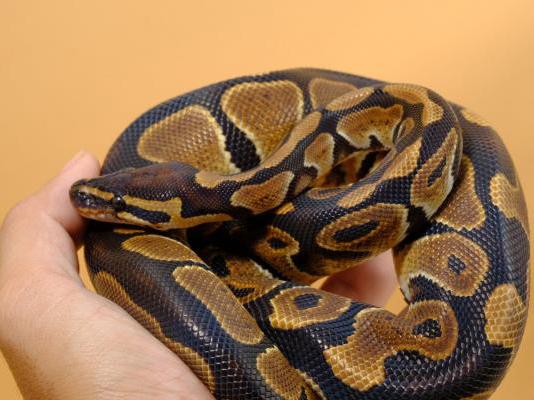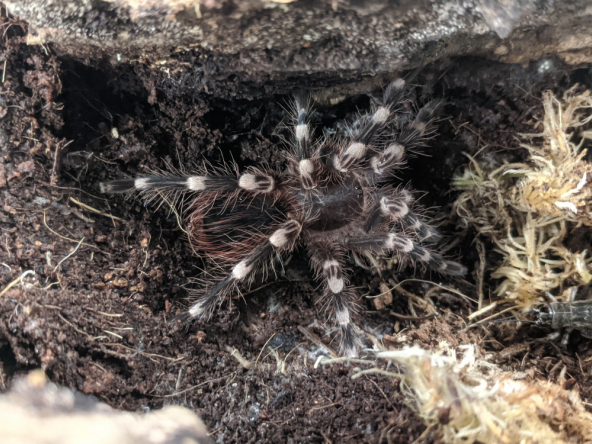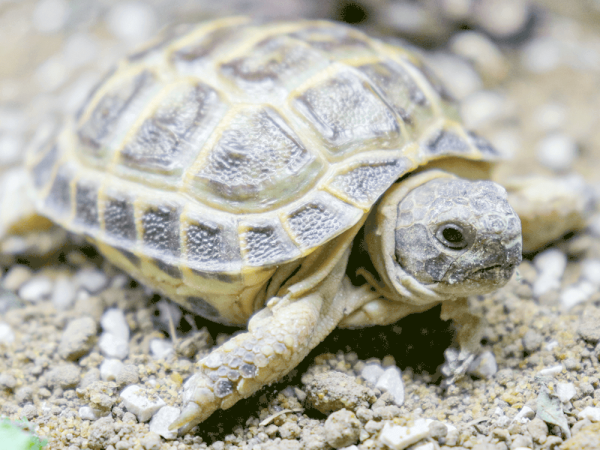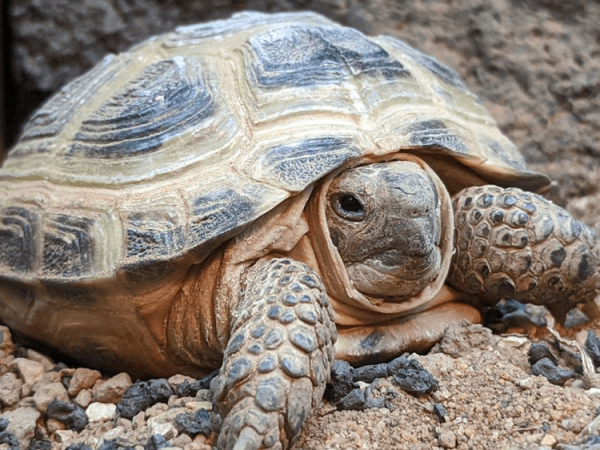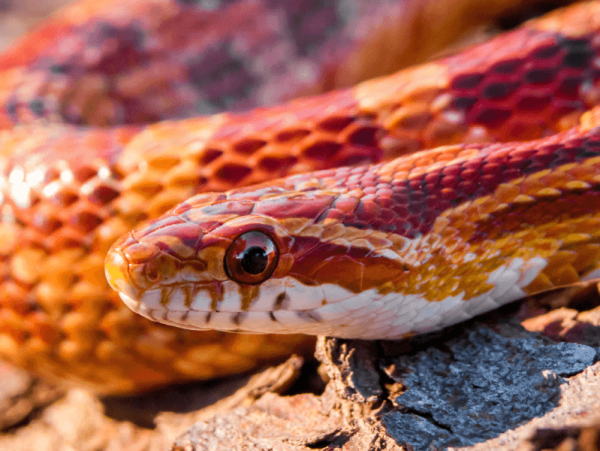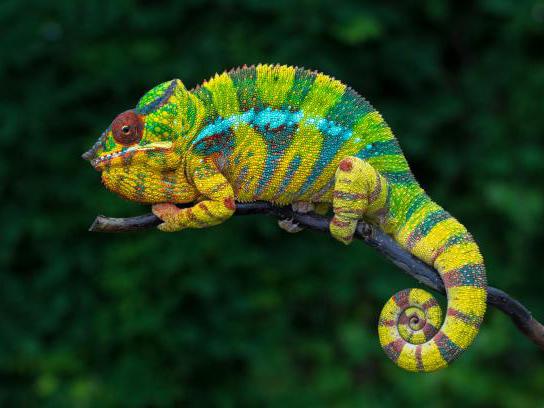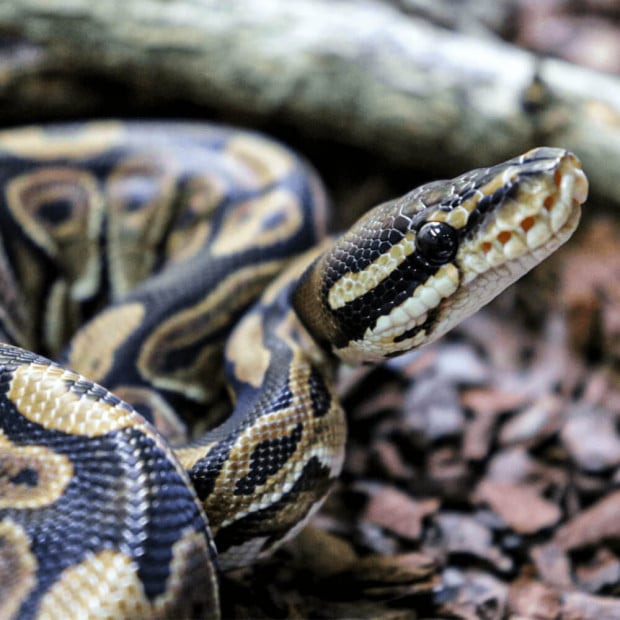Royal Pythons are native to sub-Saharan Africa and are widely distributed across the continent. Their preferred habitat includes savannah, grasslands and forested areas.
They can often be found invading mammal burrows, termite mounds or logs, and as a nocturnal species, this is where they will spend the majority of their day. They are also commonly known as ball pythons, from the ball posture they adopt.
Royals are terrestrial (ground-dwelling,) by nature, although they can often be found weaving through low branches and vegetation. A constricting species, they first locate prey using heat pits and chemical senses through the tongue before striking, coiling and squeezing their prey to death. Despite this, the species has a timid nature.
Housing
Adults require a vivarium of 4x2x2ft but for juveniles partition this off or house them in a smaller viv to start with and upgrade later.
Substrates
Line the vivarium with moisture-retaining substrates like soil and orchid bark as this species requires moderate humidity. Change the substrate every 4-6 weeks to prevent bacteria build-up.
Your vivarium should incorporate a number of hiding places with at least one at either end of the vivarium. Enrich the enclosure with foliage, logs, bark, branches, rocks and tunnels. By creating a stimulating environment your python will remain active and in good body condition.
Heating
Snakes cannot regulate their own body temperature so require a good heat source to remain in good health. The best quality heating system is a heat lamp or ceramic with protection and controlled by a thermostat. This will need to be set to 30-32°C on one side of the vivarium, with another cooler area at the other side in the mid-20s°C.
Temperatures should be maintained for 12 hours throughout the day, after which there can be a night time drop to 15-20°C. This can be achieved just by turning vivarium heat sources off overnight in the average household.
Lighting
The vivarium should be lit with UVB, as your snake would naturally be exposed to this in the wild via daylight. Light in a 12-hour cycle in conjunction with heating, to distinguish night and day. With UVB the bulb should be replaced every 6-12 months depending on the style and brand, as after this, the UV will no longer be effective.
Humidity
Spray your vivarium daily to maintain sufficient humidity levels. Spraying, moss, suitable substrates and a large water dish will all raise humidity levels, which are essential during shedding. Water can be tap water and should be changed at least every couple of days to prevent bacteria growth. Humidity should be measured using an accurate hygrometer, and temperature an accurate thermometer.
Feeding
Royal pythons are a heavy-bodied species and require prey items with high protein content like rats, hamsters and multimammate mice. Royals can become fussy feeders so introducing less nutritionally valuable prey like normal mice and chicks too regularly can put them off more nutritional items.
As your snake grows, it won’t have to feed once a week as a juvenile would, and starve-weeks are a crucial part of keeping the growth rate steady and the snake at a good weight. After feeding your python will need at least two days without handling to ensure the stress of being handled doesn't cause regurgitation.
Shopping list
- Vivarium
- Heat source
- Guard/Protector
- Thermostat
- UVB/LED Lighting
- Thermometer
- Hygrometer
- Water bowl
- Substrate
- Hides
- Door lock/ wedge
- Decoration
- Cleaning Equipment
- Tweezers
The Swell Royal python starter kit - Gold is available here.
Species fact file
Name: Royal python, Ball python
Scientific name: Python regius
Origin: Africa
Lifespan: 20 - 30 years
Length: 4 - 5ft
Temperament: Docile, easily tamed
Vivarium Size: 4ft x 2ft x 2ft
Temperature gradient: 22 - 32°C
Humidity: 50 - 60%
Lighting: Low UVB / LED
Feeding: Defrosted mammals

 Swell Royal Python Starter Kit - SilverRating:95%In stockFrom £242.99 Regular Price £417.04 Save £174.05
Swell Royal Python Starter Kit - SilverRating:95%In stockFrom £242.99 Regular Price £417.04 Save £174.05
 Swell Royal Python Starter Kit - GoldRating:100%In stockFrom £332.99 Regular Price £577.71 Save £244.72
Swell Royal Python Starter Kit - GoldRating:100%In stockFrom £332.99 Regular Price £577.71 Save £244.72
 Swell Royal Python Starter Kit - PlatinumRating:90%In stockFrom £396.00 Regular Price £709.25 Save £313.25
Swell Royal Python Starter Kit - PlatinumRating:90%In stockFrom £396.00 Regular Price £709.25 Save £313.25



